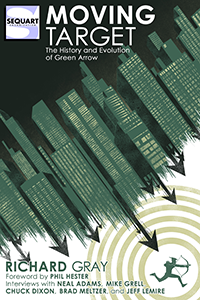In the latest issue of Descender, we get a tremendous narrative “focus pulling”, showing us with absolute clarity for the first time where the story of TIM-21, Dr Quon, Captain Telsa and Driller fit into the larger scheme of interplanetary politics. We already know the stakes are fairly high (TIM carries a “codex” that he shares with the life-destroying machines known as the Harvesters), but in this issue we’re told precisely how high those stakes can get. It’s not a major spoiler to say that the actions of our seemingly rag-tag main characters have come to the attention of the last remanent of the UGC, the ruling council that once controlled all the planets, but now has been rendered increasingly impotent by the actions of the Harvesters and other rival planet systems. The fact that Captain Telsa’s father is actually on the council has something to do with that, but there’s more to it. Like in other great space operas (think Star Wars), the main characters of Descender are far more important, and far more central, to the fate of the entire galaxy than even they themselves realize.
When we left our heroes in issue #4, they were in a fairly tight spot. A fanatical group of anti-robot soldiers from the planet Gnish had apprehended them and were taking them to the “home of the robot culls” for execution and torture. Not a particularly promising situation, despite TIM-21’s optimism that the humans will save them. It’s Driller, in fact, who in the first pages of this issue has the most realistic assessment of their situation. Driller doesn’t trust humans (a term that he expands to include all intelligent organic species), with good reason based on his experiences. TIM has has most of the same experiences, but still does trust human, because that’s the way he was programmed. This is an interesting evocation of the “nature vs nurture” paradigm, and raises the question of how much TIM would actually trust humans if he weren’t programmed to do so. And given that the drama in this book all revolves around finding and understanding something buried deep within TIM’s nature, his character is always one to watch. Whereas the other characters respond to the situation with fear (Dr Quon), grim realism (Captain Telsa) and determination (Driller), TIM seems to be searching for the appropriate response to this group of people who hate him simply because he’s a robot, and hate Dr Quon because he created robots.
TIM simply doesn’t understand prejudice, like any young child. He also has the problem (or the benefit) of having been built for empathy and connection with humans. It’s a wonderful character to place at the centre of all the swirling interplanetary drama we get in this issue.
And we really do get some Phantom Menace-style council meetings and big-time discussions here, only written with a great deal more skill than that film (all due respect to Uncle George). What we really learn here amounts to a further foregrounding of our main characters, who appear to be right in the middle of the hottest political issue of the day, while fighting for their lives, literally (in the case of Driller, who gets a great “Gladiator” scene) or figuratively (the rest of our main cast, particularly Dr Quon).
A typically great Dustin Nguyen page, showing our heroes in a tight spot
As usual, Dustin Nguyen’s artwork is superlative, and especially impressive given the number of different kinds of scenes and environments he is tasked to draw in this issue. We have big cityscapes, small scenes involving face acting, exotic aliens, an action sequence set in an arena with crowds, and even a bit of manor house intrigue straight out of Agatha Christie. All of these are handled with his usual delicate touch and textured shading. Nguyen’s work doesn’t look like anyone else’s, and it’s perfect for the story Jeff Lemire is telling.
Where that story will go after the shocking twist at the end of this issue is difficult to predict. But that’s why we keep coming back to great comics like Descender.





















































